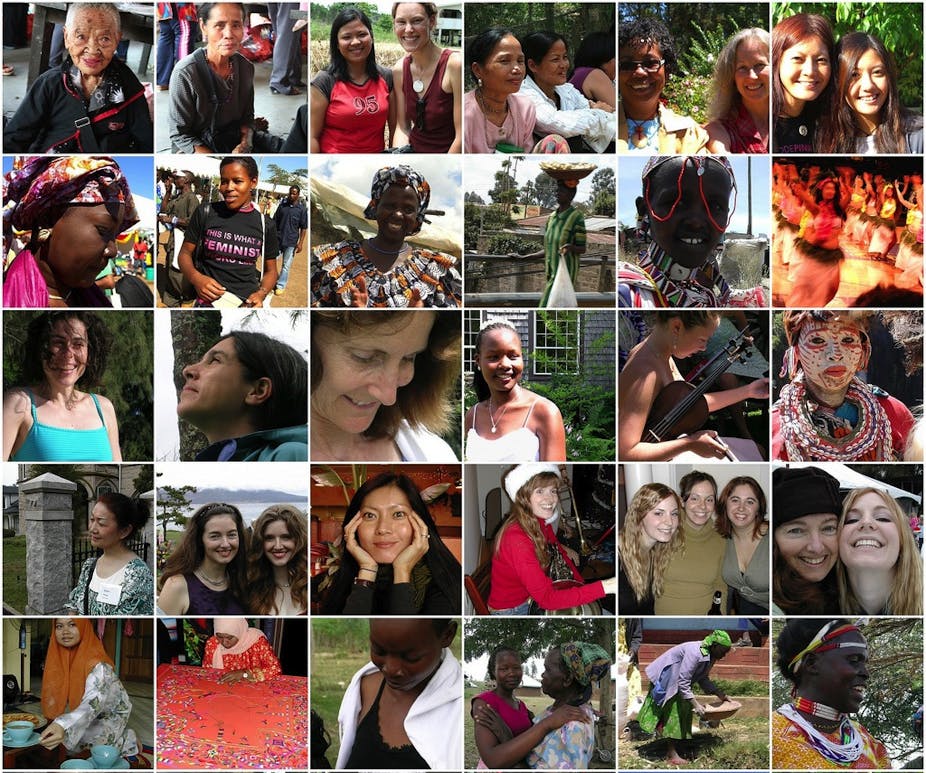Gender-based violence is condemned by the Universal Declaration of Human Rights and the Declaration on the Elimination of all Forms of Discrimination Against Women. But globally, one in three women will be beaten in their lifetime.
Australians tend to think that we hold more progressive attitudes toward violence against women and that it’s less prevalent here but the numbers disagree. According to the Australian Bureau of Statistics, one in three Australian women will experience physical violence in their lifetime, while 23% to 28% will experience sexual or emotional harm.
Violence is the leading cause of death, illness and disability for Australian women aged 15 to 44. It’s responsible for more illness and premature death than any other preventable cause, such as hypertension, obesity, or smoking.
There’s a lack of consistent data on how many women are hospitalised because of violence but we know that domestic violence constitutes the single biggest health risk to women of reproductive age. It also results in economic losses of about $13.6 billion a year.
Non-fatal acute physical injuries commonly include bruising, burns, broken bones, traumatic brain injury and other internal damage. And sexual violence increases the risk of unintended pregnancies, sexually transmitted infections and gynaecological problems.
Women in chronically violent situations report ongoing headaches, back and abdominal pain, gastrointestinal disorders, as well as limited mobility and other disabilities. They also tend to attempt suicide more often than the general population. And a recent Australian study found that women who suffered multiple types of violence had up to a 90% lifetime risk of mental disorders.
The impact of violence on women of reproductive age also has strong implications for their children. In Australia, 36% of women who reported experiencing violence said it occurred when they were pregnant, and 18% experienced it for the first time during pregnancy.
Australian data from 2011 shows violence against women is more common than many other conditions screened for in antenatal clinics, and causes higher rates of miscarriage, low birth weight and stillbirth. A population-based study from Western Australia, spanning from 2002 to 2008, found women exposed to violence had double the risk of adverse maternal and foetal complications compared to an unexposed group.
It’s difficult to have open and honest conversations about what we need to do to stop violence against women in a society that considers itself to be inclusive, progressive and fair. Moreover, the causes of gender-based violence are often thought to exist in private where problems exist between two individuals.
However, assuming violence is a private issue poses a number of dilemmas. It allows us to dismiss the problem as a series of isolated incidents committed by “bad apples”. And it overlooks the fact that men and women experience violence in different contexts.
Men are more likely to be assaulted in public places by other men. But over one third of the violence experienced by women occurs in their home and most of it is perpetrated by someone they know.
Many factors contribute to our tolerance of such violence. One is the failure to recognise and challenge attitudes around gender that devalue women and support violence.
Research has identified men’s and boys’ attitudes around gender roles as a key social determinant of violence against women. This research found that men who hold sexually hostile, sexist, or patriarchal attitudes are much more likely to assault women, and that violence-supportive peer cultures are also a major risk factor.
This is where the private becomes public – men and boys don’t develop these views in isolation. Communities can and must support boys in developing positive attitudes toward women and equip them with better ways of dealing with conflict. Men and boys are also impacted by the violence against women around them, so education will clearly benefit society as a whole.
The National Plan to Reduce Violence Against Women and their Children highlights decreasing community tolerance toward violence against women as a key objective. But until Australian society recognises and responds to it as a problem for everyone, the statistics are likely to remain unchanged.

